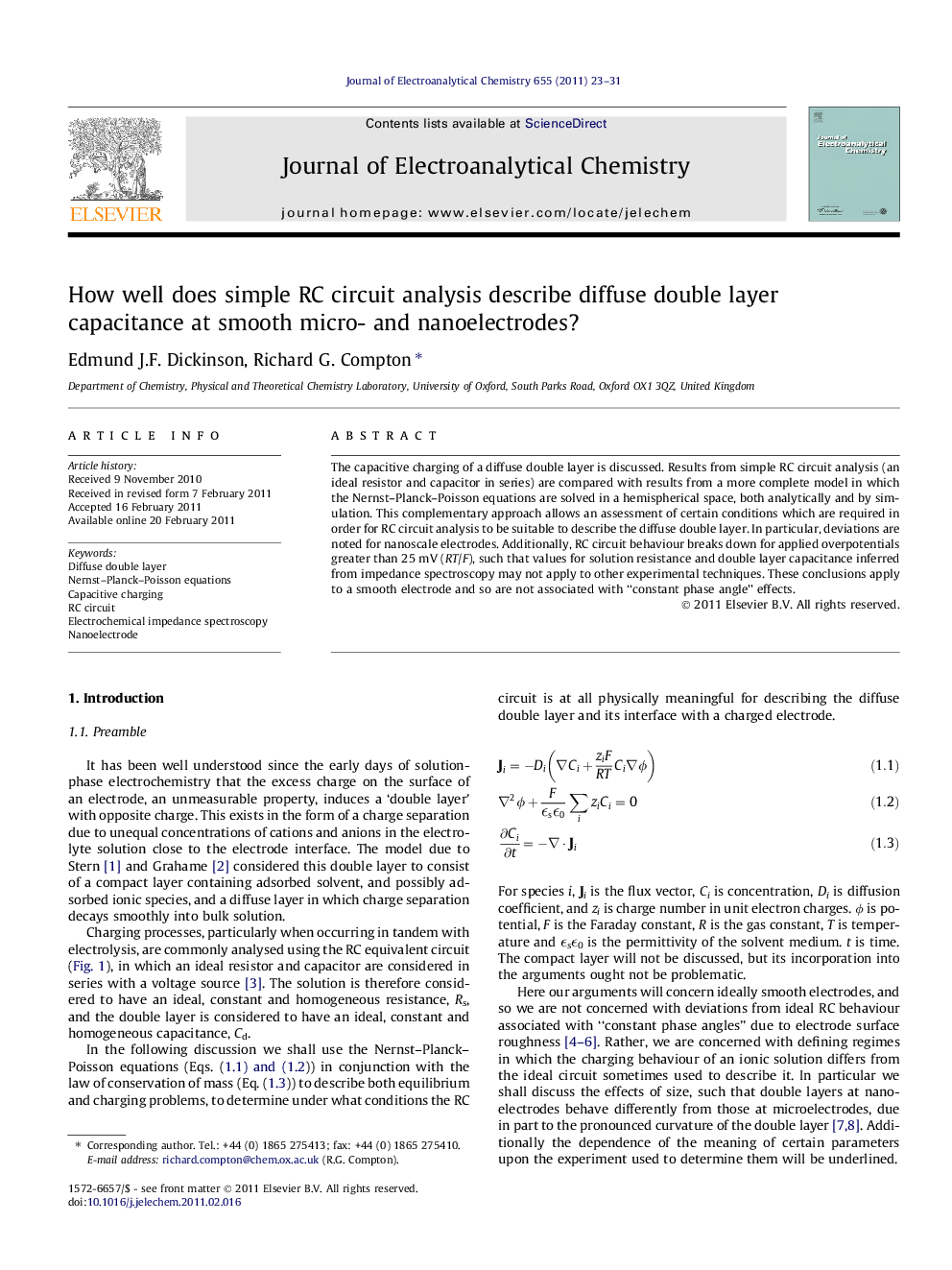| کد مقاله | کد نشریه | سال انتشار | مقاله انگلیسی | نسخه تمام متن |
|---|---|---|---|---|
| 219671 | 463290 | 2011 | 9 صفحه PDF | دانلود رایگان |

The capacitive charging of a diffuse double layer is discussed. Results from simple RC circuit analysis (an ideal resistor and capacitor in series) are compared with results from a more complete model in which the Nernst–Planck–Poisson equations are solved in a hemispherical space, both analytically and by simulation. This complementary approach allows an assessment of certain conditions which are required in order for RC circuit analysis to be suitable to describe the diffuse double layer. In particular, deviations are noted for nanoscale electrodes. Additionally, RC circuit behaviour breaks down for applied overpotentials greater than 25 mV (RT/F), such that values for solution resistance and double layer capacitance inferred from impedance spectroscopy may not apply to other experimental techniques. These conclusions apply to a smooth electrode and so are not associated with “constant phase angle” effects.
Research highlights
► We compare the RC circuit with the Nernst–Planck–Poisson equations for the diffuse double layer.
► Novel results describing the double layer are presented using analytical and simulation methods.
► Differences between nano- and microelectrodes are demonstrated.
► RC circuit behaviour breaks down for overpotentials typical in voltammetry.
Journal: Journal of Electroanalytical Chemistry - Volume 655, Issue 1, 15 May 2011, Pages 23–31